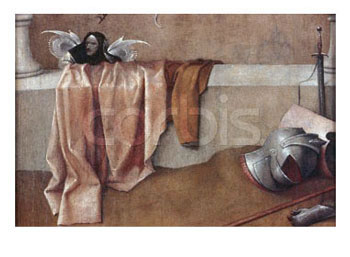
Learn foreign languages while watching your favorite YouTube videos!
The Language learning app is a handy set of tools that will help you improve your language skills by accessing subtitles, a built-in dictionary, and saving words and phrases you want to learn to revise.
Learning foreign languages will be an interesting and exciting experience for you!
Born: 1450
Died: 1516
Gender: Male
Nationality: Dutch


“For the first and perhaps for the only time an artist had succeeded in giving concrete and tangible shape to the fears which had haunted the minds of man in the Middle Ages.” Sir Ernest Gombrich, from Story of Art.
Bosch is presumed to have come from Aachen and for this reason was also known as van Aeken. He travelled a lot during his early years. His father was a painter so he was bound to have picked up some lessons on technique from him, but as for influences it is hard to say, but his closest predecessors were Rogier and Bonts.
Documentary evidence connects him at various periods between 1480 and 1516 to the Brotherhood of the Holy Virgin. He designed the stained-glass windows and a crucifix for the Chapel of the Brotherhood (1511-12) and was presumably a highly respected member of the community. Bosch was a religious painter with a strong bent towards satire and pessimistic comment. His work represents one of the last profound expressions of the medieval world view.
The work of Bosch is startling and disturbing. His paintings contain strange creatures, demons and animals set amongst ordinary humans. They depict scenes out of biblical texts or proverbs on a huge scale. The paintings foreground the depths that humans can sink to and the consequences they must pay for their depravity. For example ‘The Haywain’ and ‘The Garden of Earthly Delights’. The colours he uses are often garish, adding to the grotesque nature of the works. Yet they are immaculately conceived with Bosch showing a remarkable eye for detail.
The fact of the matter is that Bosch’s paintings were unique and the often grotesque subject matter was unconventional to say the least, indeed at the time his bizarre images led to the charge of heresy being levelled against him. Bosch achieved fame and notoriety during his lifetime, but his paintings didn’t gain a wide audience until after his death. The Surrealists regarded Bosch as a forerunner to their movement in the way he expressed primal concerns in his paintings by combining fantasy with the familiar.